The largest lake of the Balkan Peninsula, Lake Skadar or Lake Scutari, is located on the northern shores of the Adriatic Sea. It’s the surface area is 390 sq. km, which makes it the largest among the lakes of the countries bordering with the Adriatic Sea – Lake Garda, the largest lake in Italy, has a surface area of 370 sq. km.
Lake Skadar (Skadarsko jezero) is the Montenegrin name, Liqeni i Shkodrës is its Albania-style name. About 2/3 of the lake belongs to Montenegro, about a third is in the territory of Albania.
The length of the coast is 168 km: 110.5 km in Montenegro and 57.5 km in Albania.
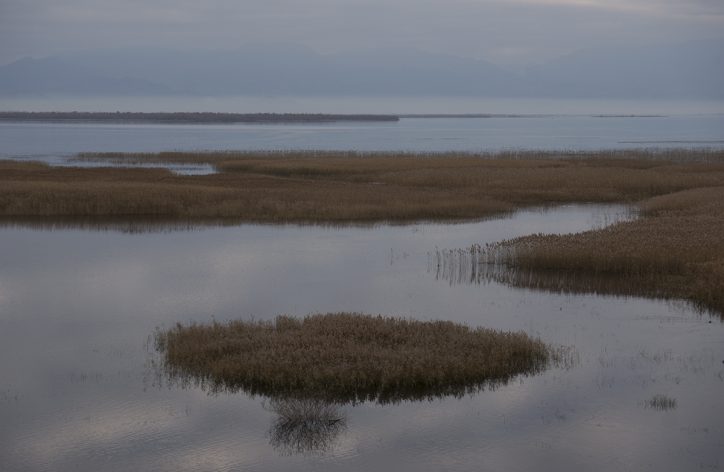
(Lake Skadar in winter. Photo by © adriaticnature)
Lake Skadar is both extremely large and beautiful, with its amazingly varied landscapes. The northern and eastern part of the lake is swampy, which makes nesting conditions perfect for a large number of birds, but in the north-east part of the lake there is a long bay of Hotit, which borders with the foothills of the Prokletije massif. Cliffs of the Dinaric Alps are located to the west and south-west of the lake.
Lake Skadar is fed on water from both underground sources and rivers flowing into it. Most of the above-ground waters of Lake Skadar are provided by the Morača River (about 62%). The Morača and Crnojevića rivers flow into the lake in its western part, forming a swampy delta with a large number of islands. The Crnojevića River, before inflowing into Lake Skadar in its lower reaches, is one of the major landmarks of Montenegro in photos of the most picturesque places in the country.
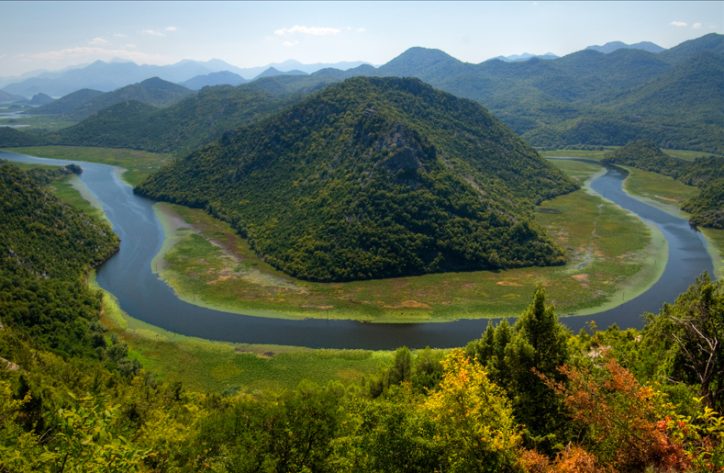
(Crnojevića River. Photo by © Evgeny Gnesin. forum.awd.ru)
Rain and groundwater reach the bottom of the lake through the coastal calcareous rocks, forming underwater springs in places called “oko” – “eye” in Montenegro. “Eyes” are the deepest parts of the lake. The deepest “eye” is the Raduško oko, it is 60 meters deep, 54 meters are below sea level.
The surface area of the lake during the winter flood can increase dramatically – the usual area is 390 sq. km increases up to 530 sq. km. The average depth of the lake is about 5 meters, the maximum is 8.3 meters.

(Beška island. Lake Skadar. Photo by © Marianne van Twillert-Wennekes. montenegro-for.me)
Overflow stream into the Adriatic Sea goes through the Bojana River (which is called Buna in Albanian). It is about 41 km long, which flows from the lake in the territory of Albania near the city of Shkoder. Its lower reaches are the border between Albania and Montenegro.
In 1983, Lake Skadar acquired the status of National Park.
Plant species wealth is the habitation of many species of birds, including egrets, Dalmatian pelicans, cormorants and many others. It adds motley dynamics to the majestic beauty of the surrounding landscapes.
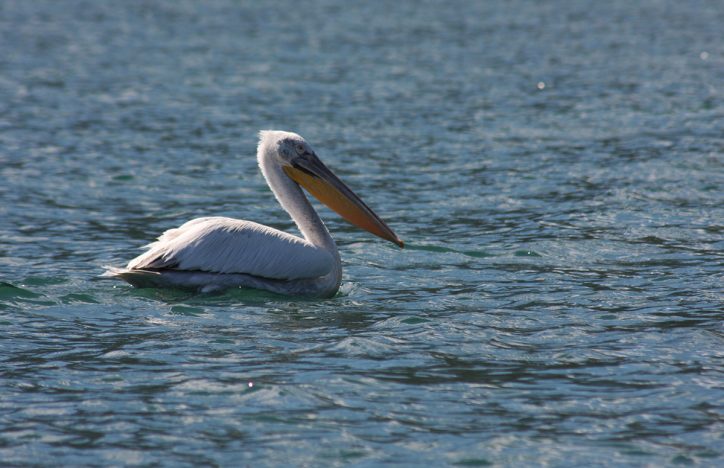
(Dalmatian pelican. Photo by © adriaticnature.сom)
However, in addition to bare facts about the lake and heaping praises on the picturesque landscapes, adriaticnature is interested in the local ichthyofauna.
It is difficult to say exactly how many species of fish inhabit Lake Skadar nowadays. This is due to the fact that there is no exact information on the success of acclimatization of some fish fauna representatives that have been put into the lake over the last several decades. But let’s try to figure out this issue.
Historically, residents of the lake shores were engaged in the fishery. To this day, the main catch has always been two permanent inhabitants: the common carp (šaran or krap from the Montenegrin side, or krapi – from the Albanian side) and the endemic of Lake Skadar and its tributaries, as well as Ohrid Lake with its tributaries, the Alburnus scoranza bleak (ukljeva – the Montenegrin name, gjuca – the Albanian name).

(Common carp of Lake Skadar. Photo by © Luka Marković)
The common carp is the most popular catch of amateur fishermen as well. According to some public sources, it grows up to 30 kilograms in Lake Skadar. adriaticnature can neither confirm, nor deny the information concerning 30 kg, but the fact that the 10+ fish is not something exceptional is confirmed by the photos of the caught fish in the profile fishing groups on facebook and fishing forums.
The Lake Skadar residents really love and appreciate the Alburnus scoranza bleak. That’s why, in winter in the Montenegrin village called Virpazar, an annual “Days of Wine and Bleak” Festival is held. Everyone is treated with homemade wine and dried fish at the festival.
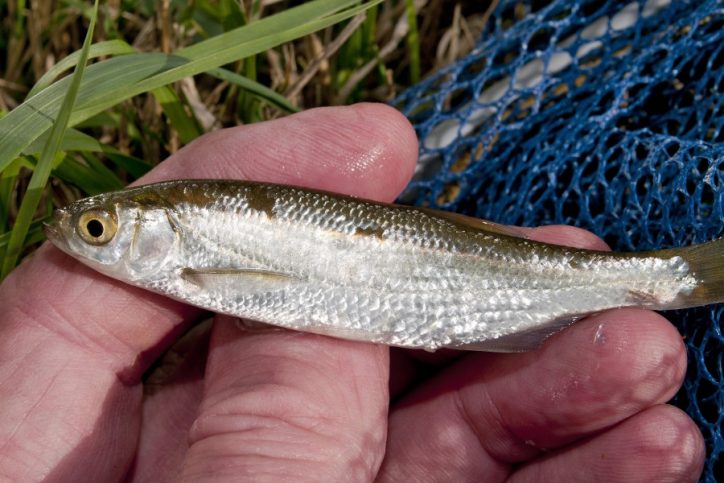
(Alburnus scoranza bleak, “ukljeva”. Photo by © pelinovo.me)
Alburnus scoranza bleak is a popular catch in sport fishery. It grows up to 23 centimeters in the lake.
The third most popular catch of both sport and amateur fishery is the European eel. Lake Skadar merges with the Bojana (Buna) River with the Adriatic Sea, thus, providing an opportunity for various inhabitants of the latter to get to their fresh clear waters.
In addition to European eel, sea lamprey, twait shad, flathead gray mullet, thinlip grey mullet, as well as sea bass, that is, European seabass swim up to the lake. Earlier, the Atlantic and Adriatic sturgeons used to swim up there too. But where are they now? Are they still alive in the Adriatic?
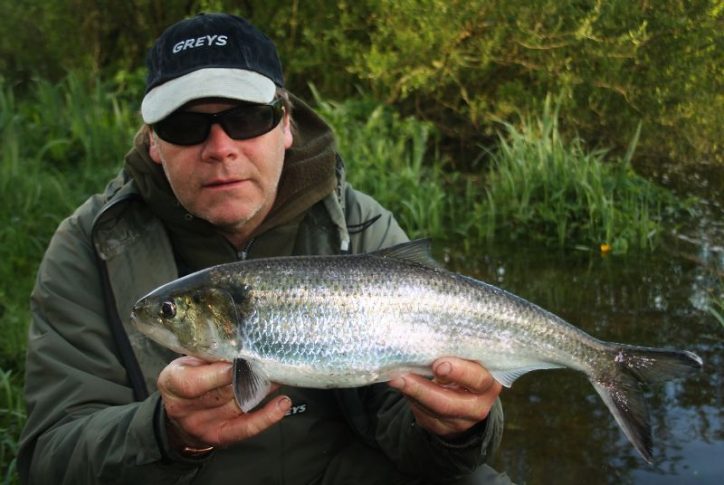
(Twait shad. Photo by © Terry Jackson. angling-ireland.com)
Common representatives of the ichthyofauna of Lake Skadar are common nase, European chub, European perch, Prussian carp, European bitterling and Scardinius knezevici rudd, the endemic of Lake Skadar, Lake Šas and Lake Ohrid. European brook and river lampreys are rather common as well.
In the 1970s, more than ten new fish species were put into Lake Skadar, including silver Prussian carp and European perch, as well as silver carp and bighead carp, the latter (beghead) one settled down there and is sometimes caught by fishermen, it can weigh 50+ kilograms, grass carp, black Amur bream, rainbow trout, stone moroko, tench, brown bullhead, eastern mosquitofish. Some species got accustomed, some didn’t. For example, there is no black Amur bream on the Internet photos with the background of the Lake Skadar landscapes. But nevertheless.
Perhaps, its own Loch Ness monster survived in Lake Skadar. It’s better to be called a Skadar beauty. It’s marble trout (Salmo marmoratus). It’s a fish, weighing up to 50 kilograms, inhabiting the area between the lake and the inflowing rivers. It was always the desired catch, especially in the troubled years of the collapse of Yugoslavia. Nowadays, it is on the verge of extinction in Lake Skadar and the rivers flowing into it, but we all hope that the population of this incredibly beautiful fish will be restored one day.

(Marble trout weighing 16.5 kg from the Neretva river. Photo by © Imšir Haznadarević. blinker.de)
Zubatak trout (Salmo dentex), which is a very rare toothy predator now, visits the lake sometimes, hibernating in its deep areas. Zubatak trout grows up to impressive sizes – up to 90 cm.
Riverine brown trout, Adriatic trout (Salmo obtusirostris), which are endangered as well, sometimes swim to the lake. Montenegro trout (Salmo montenigrinus) is a mysterious trout. There are no photos of this fish on the Internet, but it does exist, as well as a rare species of Balkan brook trout (Salmo farioides). And they all need protection and peace. Let’s hope that they will never repeat the fate of the Adriatic sturgeon, which was last seen in Montenegro and Albania in 1997 at the mouth of the Bojana-Buna River.
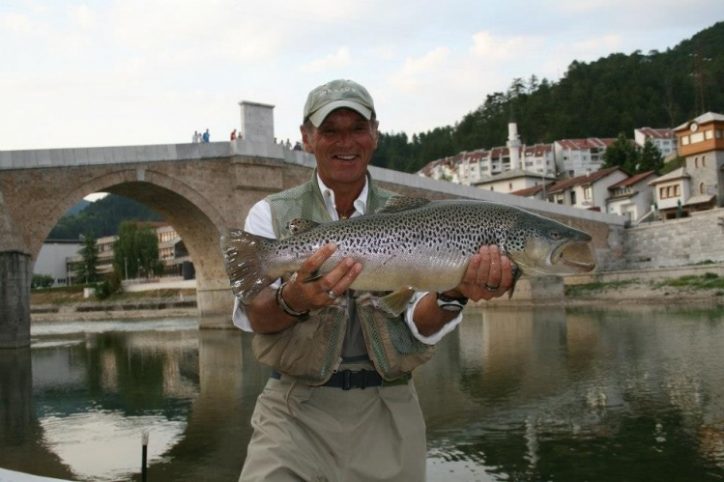
(Zubatak trout from the Neretva river. Photo by © Maki Bulatović)
Let’s sum up the part that the fishermen are interested in. What should you do on the lake? First and foremost, Lake Skadar is certainly a promising water body for catching common carp and Prussian carp of impressive size. The area can be interesting for fans of eel fishing. Fishermen who like to catch fish with lures will be attracted by the search for a large perch, which certainly inhabits Lake Skadar, as well as catching chub. And catching the endemics of Lake Skadar either with natural bait or artificial lure is worth a lot in the “ichthyography” of any fisherman. There are legends about twait shad, fishing with spinning lures. adriaticnature will try to equip a separate expedition in search of this fish to make sure that the stories are true. Beautiful trout should be left alone until better days, they are experiencing a real crisis.
In Albania, you don’t need individual permission for amateur fishing on the lake. In Montenegro, a fishing license is required. The daily license costs 5 euros, the weekly – 20 euros, the annual – 100 euros. The license (dozvola za sportski ribolov) can be purchased at information tourist centers located in relatively large populated areas of the lake (Virpazar, Vranina). In the period from March 15 to June 1, fishing is prohibited in Montenegro.
adriaticnature assures that it will take professional anglers for common carp fishing, make a photo report from the scene and share those secrets of fishing considered to be fair for public viewing by professionals.
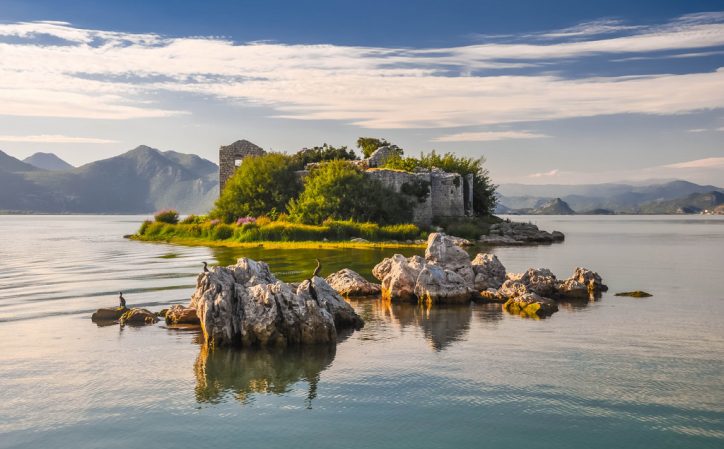
(Fortress Grmožur, Skadar Lake. Photo by © flickr.com/photos/ccr_358)
List of fish considered to be inhabitants of Lake Skadar:
– Sea lamprey (Petromyzon marinus). Morska zmijuljica (Serbian), Kavalli i detit (Albanian).
– River lamprey(Lampetra fluviatilis). Riječna paklara (Serbian), Kavalli i lumit (Albanian).
– European brook lamprey(Lampetra planeri). Potočna paklara (Serbian).
– European eel(Anguilla anguilla). Evropska jegulja (Serbian), Ngjala (Albanian).
– Rainbow trout(Oncorhynchus mykiss). Kalifornijska pastrmka (Serbian), Trofta e ylbertë (Albanian).
– Zubatak trout (Salmo dentex). Strun (Serbian), Trofta e gjucës (Albanian).
– Balkan brook trout (Salmo farioides). Primorska pastrmka (Serbian), Trofta e Drinit (Albanian).
– Marble trout (Salmo marmoratus). Glavatica (Serbian), Trofta e mermertë (Albanian).
– Montenegro trout (Salmo montenigrinus). Južno balkanska pastrmka (Serbian).
– Adriatic trout (Salmo obtusirostris). Mekousna pastrmka (Serbian), Trofta e Cemit (Albanian).
– Grayling (Thymallus thymallus). Lipljen (Serbian), Toni (Albanian).
– Dalmatian roach (Leucos basak). Žutalj, basak (Serbian), Skorta e Ohrit (Albanian).
– Albanianroach (Pachychilon pictum). Šaradan (Serbian), Skorta e zezë (Albanian).
– European chub (Squalius cephalus). Klen (Serbian), Mëlyshi (Albanian).
– Montenegro riffle dace (Telestes montenigrinus). Mekiš (Serbian), Skorti me vize (Albanian).
– Eurasian minnow (Phoxinus phoxinus). Pijor (Serbian), Cigani italian (Albanian).
– Scardinius knezevici rudd. Lola, Ljolja (Serbian), Lloska (Albanian).
– Common nase (Chondrostoma nasus). Skobalj (Serbian), Njila (Albanian).
– Skadar gudgeon (Gobio skadarensis). Krkuša (Serbian), Mrena njëmustakore e Shkodrës (Albanian).
– Alburnus arborella bleak. Primorska uklija (Serbian).
– Alburnus scoranza bleak. Ukljeva (Serbian), Gjuca (Albanian).
– Black Amur bream (Megalobrama terminalis). Crna amurska deverika (Serbian), Pëllëmbëza e zezë (Albanian).
– Silver carp (Hypophthalmichthys molitrix). Bijeli tolstolobik (Serbian), Ballëgjeri i bardhë (Albanian).
– Bighead carp (Hypophthalmichthys nobilis). Sivi tolstolobik (Serbian), Ballëgjeri laraman (Albanian).
– Grass carp (Ctenopharyngodon idella). Amur (Serbian), Amuri i bardhë (Albanian).
– Prussian carp (Carassius gibelio). Babuška, kinez (Serbian), Karasi prusian (Albanian).
– Stone moroko (Pseudorasbora parva). Bezribica, amurski čabaćok (Serbian), Notaku (Albanian).
– European bitterling (Rhodeus amarus). Pucavac (Serbian), Idhtaku (Albanian).
– Common carp (Cyprinus carpio). Šaran, krap (Serbian), Krapi (Albanian).
– Ohrid spined loach (Cobitis ohridana). Vijun (Serbian), Mrena e egër e Ohrit (Albanian).
– European perch (Perca fluviatilis). Grgeč (Serbian), Sharroku (Albanian).
– Brown bullhead (Ameiurus nebulosus). Američki somić (Serbian), Peshku mace kafe (Albanian).
– Eastern mosquitofish (Gambusia holbrooki). Gambuzija (Serbian), Barkuleci (Albanian).
– Freshwater blenny (Salaria fluviatilis). Babica riječna (Serbian).
– Knipowitschia montenegrina goby.
– Adriatic dwarf goby (Knipowitschia panizzae). Gujočić vodenjak (Serbian).
– Skadar goby. Crnogorski glavoč (Serbian), Burdullaku i Shkodrës (Albanian).
– Wester threespine stickleback (Gasterosteus gymnurus). Bodonja, Koljuška (Serbian), Gjëmbaçi (Albanian).
– European flounder (Platichthys flesus). Iverak (Serbian), Shojza (Albanian).
– Flathead gray mullet (Mugil cephalus). Cipol glavaš (Serbian), Qefulli i verës (Albanian).
– Thinlip grey mullet (Chelon ramada). Cipol balavac (Serbian), Qefulli i vjeshtës (Albanian).
– Twait shad (Alosa fallax). Ćepa, lojka (Serbian), Kubla (Albanian).
– European seabass (Dicentrarchus labrax). Brancin, lubin (Serbian), Levreku (Albanian).